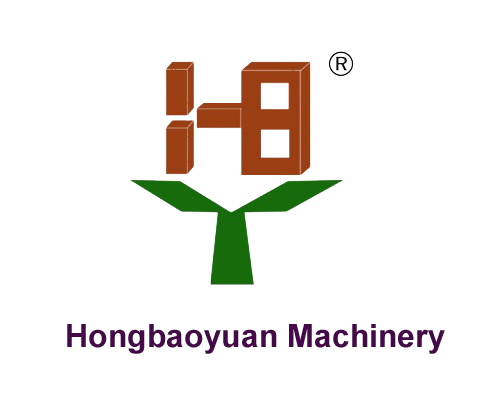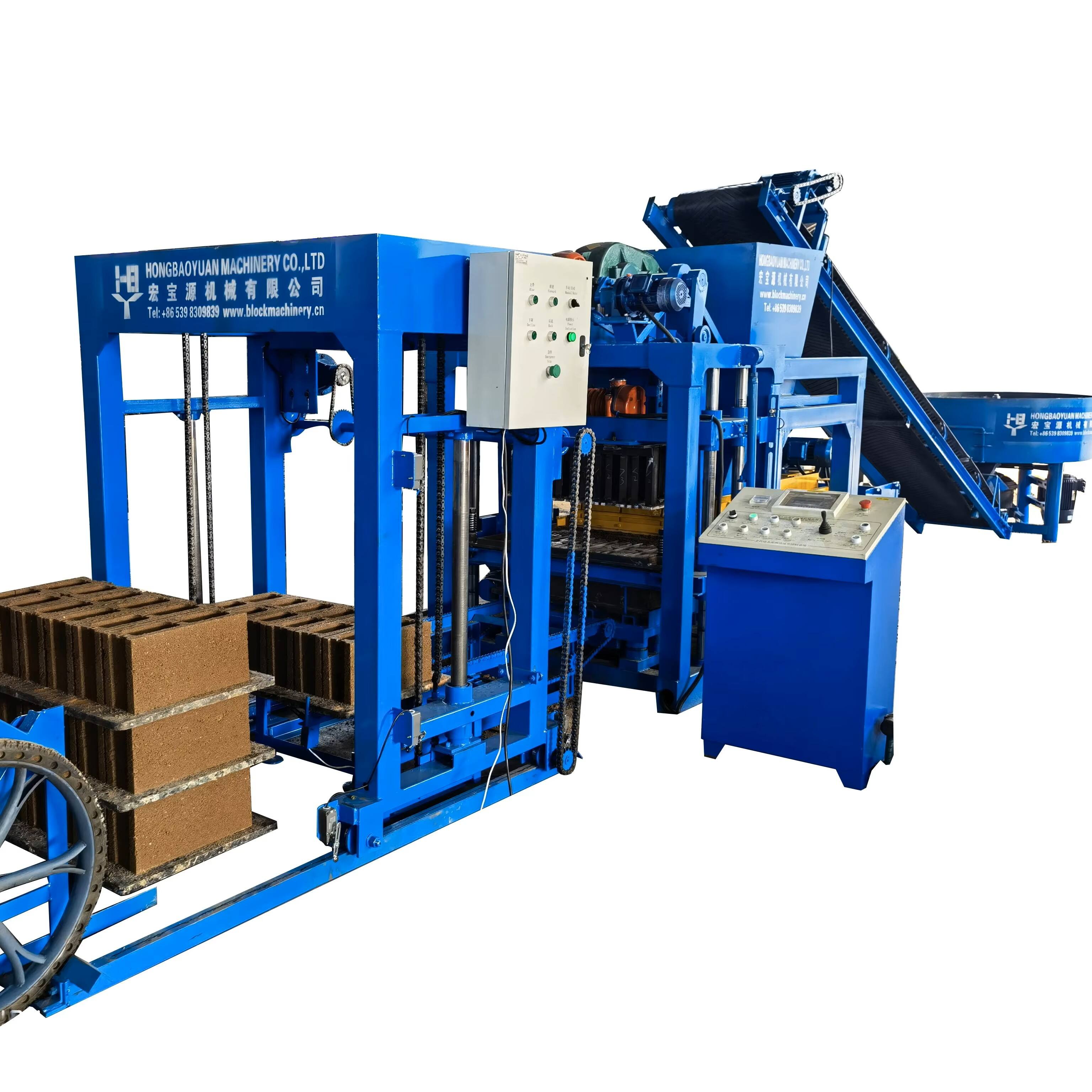Maximize Output with High-Speed, Scalable Block Making Machines
Time Efficiency in Block Production Through Automation
Modern automatic block making machines reduce manual labor by 60–80% compared to traditional methods, enabling continuous 24/7 operations. These systems achieve up to 85% production efficiency through synchronized material feeding, compression, and curing cycles—significantly outperforming manual workflows hampered by human fatigue.
Quick and Accurate Production: How Automatic Machines Reduce Cycle Time
PLC-controlled systems optimize cycle times to 10–15 seconds per block, a 400% improvement over semi-automatic alternatives. This precision supports high output while maintaining ±2 mm dimensional accuracy across batches and minimizing material waste.
| Machine Type | Blocks/Hour | Labor Required |
|---|---|---|
| Manual | < 150 | 8–10 workers |
| Semi-Automatic | 300–500 | 3–5 operators |
| Fully Automatic | 1,500+ | 1–2 technicians |
Scalability of Output for Small, Medium, and Large Construction Projects
Modular designs allow scaling from 1,000 to 15,000 blocks/day using the same core infrastructure. A single automated line can support:
- Small projects: Housing complexes (500–1,000 units)
- Medium developments: Commercial towers
- Megaprojects: Highway infrastructure requiring 50,000+ blocks/month
This adaptability makes automation viable across project scales without proportional increases in labor or space.
Case Study: Doubling Output Within Six Months Using Automated Systems
A Southeast Asian construction firm replaced manual operations with hydraulic interlocking block machines, achieving:
- 112% output increase (2,100 ‘ 4,450 blocks/day)
- 68% lower labor costs
- 18-day ROI due to accelerated project timelines
The transition demonstrated how automation enables rapid scalability while improving cost-efficiency.
Trend Analysis: Rising Demand for High-Output Block Manufacturing in Urban Development
Rapid urbanization is driving demand for 2.3 trillion new blocks annually by 2030. To meet tight infrastructure deadlines, manufacturers are adopting high-capacity machines producing 5,000–8,000 units/day—a 240% capacity increase since 2020. This shift reflects a broader industry move toward industrialized, scalable production models.
Cut Costs and Improve Efficiency Through Automation and Labor Savings
Reduced Cost of Labor with Minimal Manual Intervention
Robotic material handling and PLC-controlled workflows reduce labor needs by 40–60% compared to manual lines. By automating tasks like feeding, ejection, and palletizing, modern systems cut operational expenses significantly. According to construction automation research, facilities using automation report 35% lower labor costs.
Long-Term Savings from Decreased Reliance on Skilled Masons
Automation reduces dependency on scarce skilled labor by standardizing precision processes such as vibration calibration and moisture control. Simplified interfaces enable general workers to manage multiple machines, slashing training costs by up to 75% while sustaining consistent quality.
Industry Paradox: Higher Initial Investment vs. Sustained Operational Savings
Though automated machines require 20–40% higher upfront investment, they deliver 50–70% lower operating costs over five years. Manufacturers typically recover initial outlays within 18 months through 12–15% reductions in raw material waste and 30% lower energy consumption via efficient hydraulic systems. This long-term savings profile makes automation essential for sustainable growth.
Ensure Consistent, High-Quality Blocks with Precision Engineering
Consistent Quality of Concrete Blocks & Bricks Across Batches
Closed-loop feedback systems continuously monitor vibration frequency (12,000–15,000 RPM) and compaction pressure (2.5–3.5 MPa), ensuring dimensional accuracy within ±0.5mm. This level of consistency holds across daily outputs exceeding 50,000 blocks—even with variations in raw materials.
Precision Engineering and Reduced Human Error in Production
Servo-driven actuators achieve positioning accuracy down to 0.01mm, eliminating human measurement errors. As a result, defect rates drop by 63% compared to semi-automatic systems. Real-time sensors detect density inconsistencies during mixing and automatically adjust parameters before flaws develop.
Data Point: 98% Uniformity Rate Reported by ISO-Certified Manufacturers
Automated systems achieve a 98% batch uniformity rate—34 percentage points higher than manual methods. Advanced quality controls identify deviations 0.8 seconds faster than human inspectors, correcting issues before compromised units leave the production line.
Customize Block Designs to Meet Diverse Construction and Market Needs
Flexibility in Mold Design: Creating Interlocking, Hollow, and Decorative Blocks
Interchangeable mold systems let manufacturers switch between interlocking, hollow, and decorative blocks with minimal downtime. With over 15 standard configurations available, one machine can produce everything from structural foundation blocks to thermal-insulating units and architectural pavers. In advanced systems, mold changes take under 15 minutes, preserving productivity while maximizing versatility.
Meeting Architectural Demands with Easy-to-Switch Templates
Modern template systems make it easy to turn those digital designs into actual molds ready for production, all without needing someone to manually recalibrate everything each time. Contractors love how one machine can switch back and forth between creating those rough split-face blocks needed for old-style buildings and producing sleek modern facade units too. The system adapts fast enough to meet whatever look local communities want, comply with building codes in different areas, and still hit what clients actually asked for in their specs. This kind of versatility means construction teams can handle custom jobs much faster than before, especially on sites where they need multiple kinds of blocks installed at once but have tight deadlines to meet.
Boost Your Production with an Automatic Block Making Machine
Achieve Fast ROI with Easy-to-Operate, PLC-Controlled Block Making Machines
Modern block making machines integrate PLC (Programmable Logic Controller) systems to streamline operation and accelerate profitability.
User-Friendly Interfaces for Non-Technical Operators
Touchscreen panels simplify adjustments to speed, mix ratios, and mold settings, reducing training time to under 30 minutes. This ease of use lowers reliance on technical staff and minimizes shift-change delays.
PLC-Controlled Systems Ensure Smooth, Error-Free Operation
By standardizing feeding, compression, and ejection processes, PLCs maintain pressure within ±2% variance and reduce material waste by 18% compared to manual methods. Integrated monitoring helps operators detect anomalies early, preventing costly stoppages.
Calculating ROI: Break-Even Timelines Within 12–18 Months
| ROI Factor | Impact |
|---|---|
| Labor savings | $28k/year per operator replaced |
| Material efficiency | 22% reduction in waste |
| Production uptime | 95% vs. 78% for manual systems |
Most businesses reach break-even within 12–18 months. One 2023 case study showed that cutting cycle times by 34% allowed a manufacturer to boost output by 1,200 blocks/hour without adding personnel—demonstrating automation’s role in scalable, lean production.
FAQ
What are the key benefits of using automatic block making machines?
Automatic block making machines reduce labor needs, improve production efficiency, and ensure high-quality outputs. They also lower material waste and operational costs while allowing scalability across different project sizes.
How do automated block making machines improve precision?
They use PLC-controlled systems to optimize cycle times and reduce material waste, ensuring dimensional accuracy within ±2 mm. Moreover, servo-driven actuators improve positioning accuracy, leading to fewer defects.
What is the return on investment (ROI) timeline for these machines?
Most businesses achieve ROI within 12-18 months due to labor savings, material efficiency, and increased production uptime.
Table of Contents
-
Maximize Output with High-Speed, Scalable Block Making Machines
- Time Efficiency in Block Production Through Automation
- Quick and Accurate Production: How Automatic Machines Reduce Cycle Time
- Scalability of Output for Small, Medium, and Large Construction Projects
- Case Study: Doubling Output Within Six Months Using Automated Systems
- Trend Analysis: Rising Demand for High-Output Block Manufacturing in Urban Development
- Cut Costs and Improve Efficiency Through Automation and Labor Savings
- Ensure Consistent, High-Quality Blocks with Precision Engineering
- Customize Block Designs to Meet Diverse Construction and Market Needs
- Boost Your Production with an Automatic Block Making Machine
- FAQ

